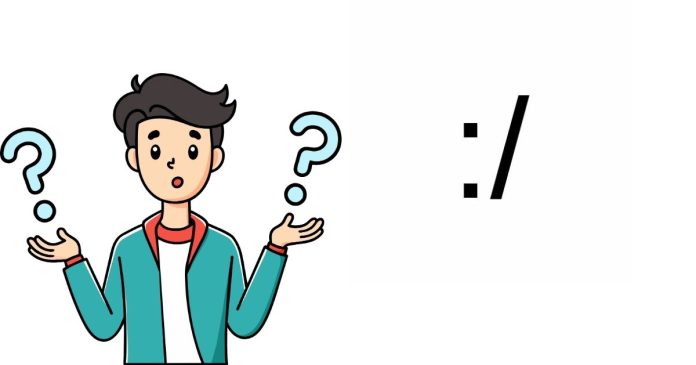In the ever-evolving world of digital communication, emojis and emoticons play a significant role in conveying emotions and subtext that words alone may not capture. Among these, “:/” is a commonly used emoticon that might leave some people puzzled. So, what does it mean? Let’s dive into the context and nuances of this emoticon.
The “:/” emoticon resembles a face with a neutral or slightly negative expression. The colon (“:”) represents the eyes, and the forward slash (“/”) acts as a slanted mouth, suggesting unease, disappointment, or mild frustration. Unlike emojis, which are standardized across platforms, “:/” is a text-based emoticon, meaning its interpretation can vary depending on the context and the relationship between the sender and receiver.
Common Interpretations of “:/”
- Uncertainty or Hesitation:
- When someone uses “:/”, they might be expressing doubt or indecision. For example:
- “Are you coming to the party?”
“I’m not sure yet :/”
- “Are you coming to the party?”
- When someone uses “:/”, they might be expressing doubt or indecision. For example:
- Disappointment or Frustration:
- It’s often used to convey mild displeasure or irritation without sounding too harsh.
- “I forgot my keys at home :/”
- It’s often used to convey mild displeasure or irritation without sounding too harsh.
- Awkwardness or Embarrassment:
- The slanted mouth can also indicate an awkward or uncomfortable situation.
- “I didn’t know what to say during the meeting :/”
- The slanted mouth can also indicate an awkward or uncomfortable situation.
- Sympathy:
- Sometimes, people use “:/” to empathize with someone else’s predicament.
- “I’ve been feeling a bit down lately.”
“Oh no, I’m sorry to hear that :/”
- “I’ve been feeling a bit down lately.”
- Sometimes, people use “:/” to empathize with someone else’s predicament.
When to Use “:/”
Given its subtle nature, “:/” is versatile but best used in casual, personal conversations. It’s ideal for situations where you want to express mild negative emotions without being overly dramatic. However, overusing it can dilute its impact or make your messages seem overly pessimistic.
Alternatives to “:/”
If you feel that “:/” doesn’t quite capture your intended tone, here are some alternatives:
- Emojis:
- 😕 (confused face) or 😟 (worried face) can serve as graphical substitutes.
- Other Text Emoticons:
- “:|” for neutrality
- “:\” for even greater unease
- Words:
- Sometimes, spelling out your feelings is the clearest option.
- “I’m feeling unsure about this.”
- Sometimes, spelling out your feelings is the clearest option.
The “:/” emoticon is a simple yet powerful way to express a range of emotions, from uncertainty to sympathy. Understanding its meaning and usage can help you navigate digital conversations with more nuance and empathy. The next time you see or use “:/”, remember its versatility and subtlety in conveying emotions—because sometimes, a little slanted smile says it all.



